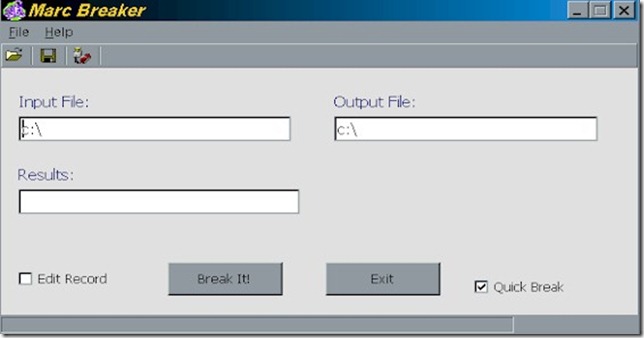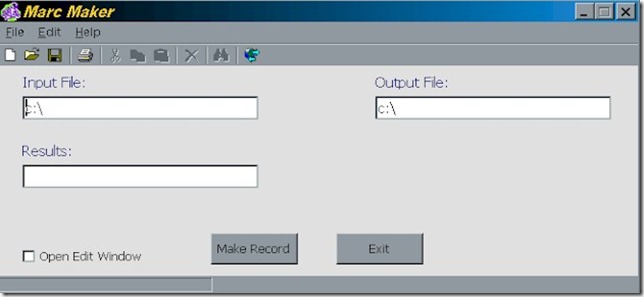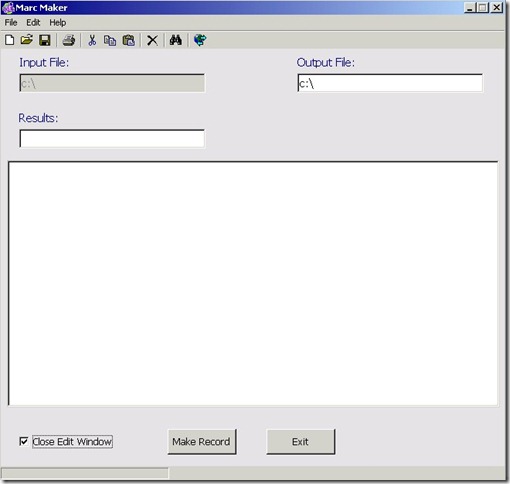MarcEdit 1.0
In terms of the MarcEdit user interface, the program has changed significantly. Since MarcEdit was originally developed as a set of coding libraries and tools, MarcEdit 1.0 really focused on providing a graphical interface to those tools and functions.
In Figure 1 above, you can see the original MarcEdit startup screen. Early versions of MarcEdit essentially exposed the functionality of the MARCEngine, the underlying coding libraries used to process MARC data. What’s more, the program interface was largely influenced by the Library of Congress’s MARCBreakr/MARCMakr [ref]http://www.loc.gov/marc/makrbrkr.html#download[/ref] and the way the tool separated specific operations. Looking back, the tool lacks many of the functions that make MarcEdit useful within today’s metadata environment. In 2000, when the first public version of MarcEdit was released, few catalogers had the ability to directly manipulate MARC data once it was loaded into OCLC or their organization’s ILS. Records management was largely taken out of the hands of the catalogers and moved into library information technology units where tools like MARC PERL could be utilized to build scripts that could edit batches of records. MarcEdit represented the first concerted effort to provide a graphical, free MARC editing client to the cataloging community.
Figure 2 and 3 illustrate the MarcBreaker and MarcMaker windows. Early on, you can see that MarcEdit started to introduce this idea of editing records visually inline as part of the breaking and making process. In Figure 2, there is an option to edit records once a file was processed. Likewise, in Figure 3, there is an option to open an edit window (Figure 4 below). These edit windows were the early precursors to MarcEdit’s MarcEditor — a specialized notepad for editing MARC records. The other thing I’d like to highlight is the option in Figure 2 called Quick Break. Early on in the development process, I found it necessary to start investigating different methods for handling invalid MARC data provided by vendors. This early version of MarcEdit provided users a toggle so that they could switch between a breaking algorithm that strictly followed the MARC specification, or a permissive breaking algorithm that made a number of assumptions about a record’s format in order to over come structural errors in the records. Today, this functionality still exists in MarcEdit, though the process has become much more advanced and is done automatically for the user.
MarcEdit 3.0
MarcEdit 3.0 represented the first major change to the MarcEdit interface. This was the version that introduced a full fledged MarcEditor, attempted to address the growing problems of diacritics between varying flavors of MARC, and began looking at how non-MARC data like delimited text could be integrated into MARC data. This version also represented the point in which MarcEdit became more mainstream. Up until this point, the application was largely used by a handful of people at OREStateU, a few folks in the Pacific Northwest, and the people Kyle Banerjee ran into and convinced to give it a try. Around MarcEdit 3.0 was the first time I started hearing people talk about the application at conferences and in presentations, and the first time I saw it show up in an article discussing automating metadata workflows.



